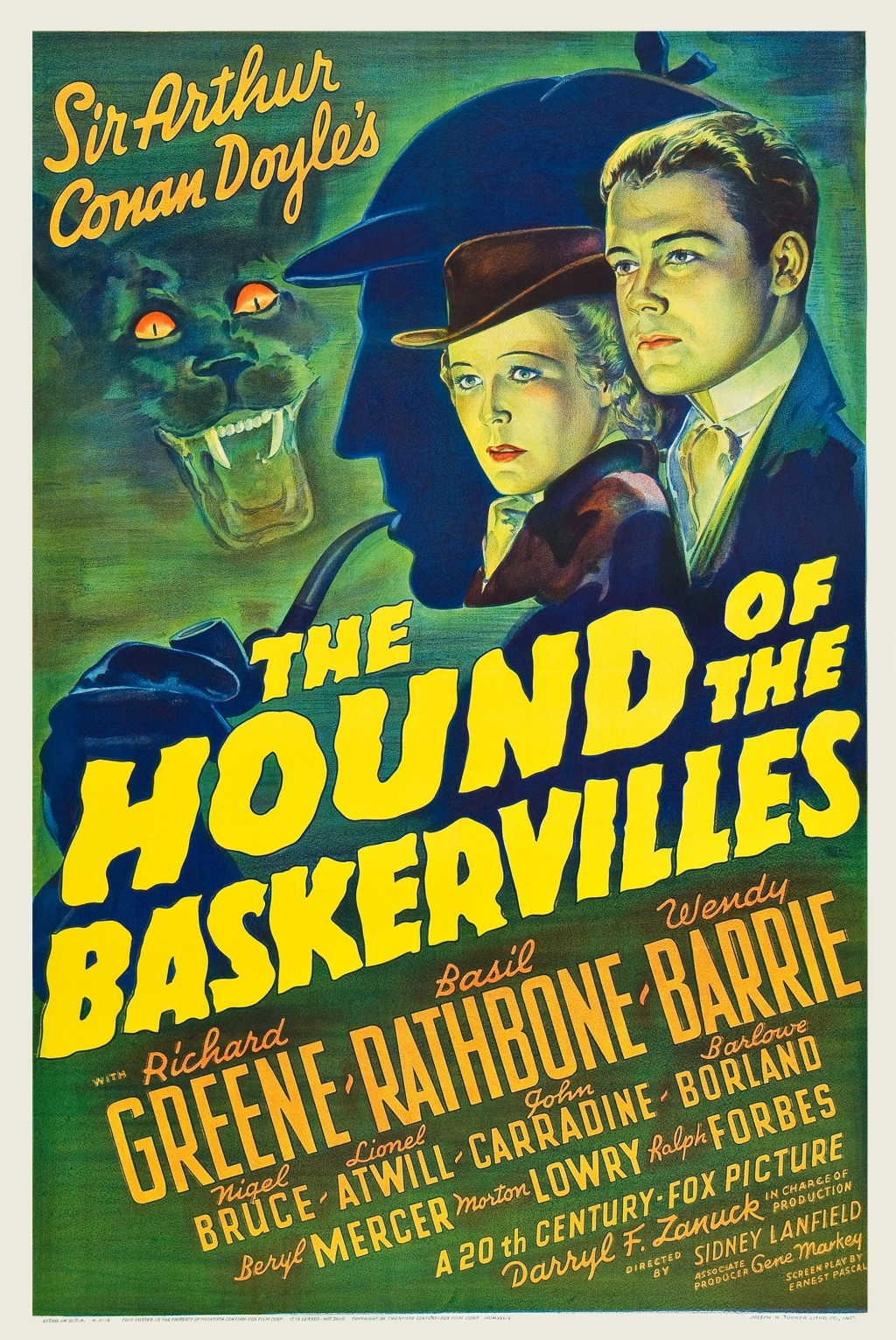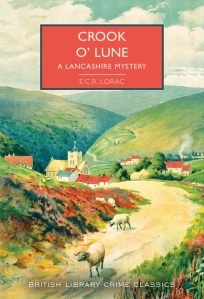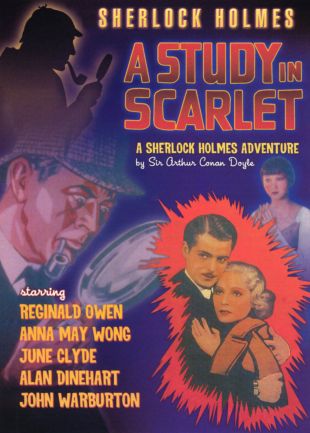
Originally published in 1954
Highly entertaining “inverted” mystery stories (the reader knows who committed the crime, but the interest lies in how the detective solves the case) that appeared as a series in a British magazine in the 1930’s. Vickers posits a (fictional) branch of Scotland Yard, the “Department of Dead Ends,” a repository for the unsolved cases of the yard. It’s up to the brilliant detectives of this branch to solve these seemingly impenetrable mysteries. Vicker’s characters are full fleshed and his plots ingenious.
Back when I first started getting interested in inverted mysteries I went and sought out suggestions of authors who wrote that kind of crime story. One of the names that kept coming up was Roy Vickers whose Department of Dead Ends stories often clearly established the killer’s identity in the first few paragraphs.
The collection I am writing about today contains a selection of fourteen of those stories – about a third of the total written. They are selected by E. F. Bleiler who, for reasons I cannot quite fathom, opts to arrange them out-of-order. The Rubber Trumpet explains the work and methodology of the Department and while the other stories stand on their own, I appreciated them all the more for reading that tale.
Vickers’ stories are not exactly formulaic but most stories adhere to a structure in which we learn the killer’s identity, see how they came to commit the crime and how they plan to cover it up. Many of the crimes occur in a moment of desperation or anger, often being strangulations, and in quite a few the cover-up will involve the assistance of another person within the case.
The investigation is usually just a couple of pages long and typically will hinge on the discovery of a strange detail, in a few cases completely disconnected with the crime itself. The detective is able to work from that strange element to assemble a chain of logical deductions that will eventually lead to some fact in the alibi being overturned or that will help the police make a key connection.
These stories were originally published in monthly mystery magazines, mostly Ellery Queen’s Mystery Magazine, and I will say that they are probably best enjoyed in small doses rather than trying to read them all in one or two sittings. I haven’t read enough other Vickers stories to know if Bleiler’s selections favor a particular type of story but I think if you make the decision not to organize them by publication date then you should take care not to put similar stories next to each other.
In spite of that complaint I should say that the quality of the collection is generally strong and I think there are some excellent stories on offer here. The Henpecked Murderer, The Rubber Trumpet, Little Things Like That and The Man Who Murdered in Public are all very strong stories and each are worth a look.
A Toy for Jiffy
The collection opens with this story of an army deserter who turns murderer. Though Vickers does seem interested in trying to present us with a slice of social realism I think he misses the mark with his attempts to craft believable, gritty working-class dialogue. An occasional use of ‘duckie’ and ‘kiss-me-foot’ doesn’t really convince as I think it is intended to. Fortunately this is confined to just the first third of the story so it is easily ignored.
Vickers is far more successful looking at the character of his murderer and exploring his psychological compulsion to interact with a child’s toy. The idea of the murderer becoming fixated on something is one I had enjoyed in another of his short stories, The Eighth Lamp which is contained in the British Library Crime Classics collection Blood on the Tracks and I think it is just as successful here.
The Henpecked Murderer
A married businessman hires a stenographer who he dotes on, giving her presents and inviting her on holidays. Though initially quite innocent on the man’s part, following repeated accusations of infidelity he recognizes the attraction and the pair become lovers. The piece openly acknowledges elements of the story which parallel the famous case of Dr. Crippen but while they have a similar starting point they become quite different stories.
I thought that this second story was excellent both in its premise and also in the clever way it is resolved. There are several surprising plot developments that feel like natural and logical developments and the ending is splendid.
The Yellow Jumper
This story opens with the information that Ruth Watlington, a teacher at a girls’ boarding school, was executed for committing a murder. The victim was a young colleague, Rita, who lived with her in a cottage in the woods and was in a relationship with a mathematics teacher at the same school though, we are told, it was not a crime passionel.
What we have here is an interesting story in which we are initially concerned with understanding why a murder was committed when it seems that there was no animosity between the two women, nor jealousy over the schoolteacher’s affections. The answer is unexpected and I enjoyed seeing how the remainder of the story developed.
The way Ruth is caught is perhaps a little bit of a stretch although I think it is at least consistent with the way the characters were previously established. I was a little less convinced by a personal development that takes place and that gets brushed off with a statement that we need not concern ourselves with how it came to happen though it is not the focus of Vickers’ story.
The Case of the Social Climber
This story concerns the murder of an aristocrat by a financier who had been friends with him for decades and whose daughter was engaged to be married to his son. It is a mixture of a whydunit and a howcatchem as we know that a gold snuff box is the key to the solution but not how all of the pieces fit together.
Though it is just twenty-five pages long, I felt that this was a noticeably slower story than the two that preceded it although it does have some points of interest. Part of the problem is that we become aware of an important development quite a few pages before the end and so there is little surprise in the conclusion although it is still quite neatly executed.
The Rubber Trumpet
I am a little puzzled by the decision to put the oldest story in the collection in the middle of the book given it gives us both a description of the history of the Department of Dead Ends and also explains the method by which they operate. It is certainly not for any weakness in the story as it is imaginative and cleverly resolved.
In the first page we are told that the murderer is George Muncey and that he was caught because of a rubber trumpet although that item had nothing logically to do with Muncey, his victim or the circumstances of her murder. Once again we have a different type of inverted mystery here – at the outset of the story we do not know the identity of his victim and we have to understand how this rubber trumpet will factor into the investigation.
The answers are very clever and I found the tale to be very entertaining and appreciated Vickers’ bold characterizations of the principal figures in the case. The way the Department of Dead Ends solves it is quite clever, relying on a chain of apparently illogical connections yet once they are made and tested everything falls into place very neatly.
A Man and His Mother-In-Law
A man gets remarried to a younger woman who has been raised by a woman she is not related to but who she defers to on everything. While he is initially quite content with their marriage, he finds his happiness endangered when his wife tells him that her ‘aunt’ is sick and that she will have to separate from him to care for her. This disagreement begins a chain of events that will lead to a murder.
I felt that this was one of the less interesting stories within the collection although it does have some interesting ideas such as its discussion about power relationships between family members and within a marriage. I felt that the problem here is that the trick in how the man will be caught is quite predictable as it requires some careful set-up earlier in the novel that stands out from the rest of the text. What ought to be a punchy, unexpected ending instead feels inevitable.
The House-in-Your-Hand
This story initially appears to depart from Vickers’ usual style in that we do not know the killer’s identity at the start of the story although we know their relationship to the dead man, a successful financier of home purchases. Within a few pages we have learned the identity of the killer leaving us to wonder how they will be caught.
The unusual approach to the structure of this story does help it stand out but I did not feel it was successful. Not only were the characters’ stories and personalities quite dull, I found it hard to follow what was going on at several points. I perhaps might have appreciated it more if I had been able to visualize a crucial clue but sadly that aspect of the story just didn’t work for me.
Little Things Like That
Peter Curwen is a man who lives life by a system. He credits his careful attention to details such as the lights always being off, checking the car doors are locked and that dirty spoons are placed on plates with averting disaster. After being fussed at over breakfast by his wife about his habits he vows to change them but later that day he comes to believe that his carelessness is the cause of another man’s death.
This is a very different sort of story from the others in the collection and you might argue that it isn’t really a mystery at all. The section of the story in which a crime is committed and then detected is very short because Vickers’ focus is on his characters and the way in which this antagonism over his habits develops.
I found it to be a really compelling short story and while a development near the end did not surprise me, I found the process of getting to that point to be very satisfying and dramatic.
Kill Me, Kill My Dog
This tale involves two rival engineers who fell out with each other when one man persuaded the other’s fiancée to marry him instead. We learn that one of the two men disappeared, presumed murdered, although no body was found for over six months after his death. We also learn that a mastiff was responsible for leading the Police to the other man.
We are back in howcatchem territory though the circumstances of the crime itself are quite intriguing. I think Vickers does a good job of exploring how the killer finds himself murdering someone and I appreciated the complexities of their relationship. In fact Vickers pulls off quite a clever little reveal that shifts our understanding of what has happened.
On the other hand, I think the ending of the story seems beyond far-fetched. While the logical chain of deductions makes sense the starting point for that chain is quite unlikely, even if the moment of the reveal is entertaining.
The Nine-Pound Murder
The daughter of a judge marries a man she has just met after he proposes under the mistaken belief that she is much more wealthy than she is. With their resources dwindling the wife takes a job working for a charity but one Saturday she is found unconscious on the floor by the safe having been chloroformed. Inside is the body of her husband who apparently was trying to rob the building.
I found this to be an interesting story although it is one of the less inventive in the collection. Some aspects of the setup are quite predictable such as the source of the chloroform and there are no surprises but the story is told well enough.
Marion, Come Back
A man’s wife suddenly disappears leaving a note for her husband and no instructions about where she was headed. When the husband is suspected of the murder he tries to convince the Police of his innocence, showing them the contents of the letter, but no one can understand why a body has not turned up.
I found this story to have an interesting premise and appreciated the clever solution to how the wife has disappeared without a trace.
The Parrot’s Beak
A young man who is incapable of caring for himself gets engaged to a woman who is interested in him primarily for his money. She manipulates him into staging a robbery but murders him while on the job to get hold of the insurance on his life.
A much slighter story than the others in the collection. One of the developments is a little too clearly set up early in the story, reducing some of the impact of the conclusion, but it is still pretty entertaining.
A Fool and Her Money
An investor is in dire financial straits as he anticipates taking a hammering on the exchange when salvation comes in a sizeable anonymous deposit into his account. He quickly realizes that the donor is a girl he once awkwardly took out and kissed but had little interest in and he suspects that the gift may create an obligation on his part.
Unfortunately this story really did not work for me on any level. The characterizations are odd and neither character convinces in terms of their decision-making. The killer’s plan is so simple it feels almost incomplete. Nor is there much of a surprise in how the piece is resolved. A disappointment.
The Man Who Murdered in Public
The collection ends with a corker of a story about a man who devises a system of killing people in full view of others and being able to not only go free but to profit financially from their deaths. The system used is simple and clever while the killer stands out as being one of the few here who carries out premeditated murders.
The path to their being brought to justice is similarly quite clever and while it relies on a trick used in one of the other stories in this collection I think Vickers pulls it off very well.




Leave a comment